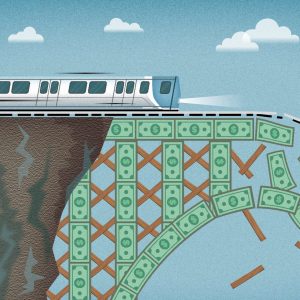
Increasingly serious labor shortages are putting America’s conveniently low food prices at risk. Yet, Obama’s recent executive action on immigration does little to assuage the agricultural labor crisis and could possibly exacerbate the shortage. The shortage problem is challenging the agriculture industry to adapt and may lead to the establishment of a more efficient food system.
According to a report by the National Council for Agricultural Employers, a group that represents the agriculture industry before Congress, farmers are losing 320 million dollars a year due to labor shortages. The shortage has left agriculture unpicked on branches, and fields neglected. While the government does not collect data on labor shortage costs due to the subjective nature of the measurement, the industry’s conclusions are backed up by other statistics. First, real wages are rising for agriculture workers, signifying a greater need for work. The National Agricultural Statistics Services’s Farm Labor Survey finds that real wages are on the rise at a rate of 0.8% per year. Second, the average age of the workforce is growing, suggesting fewer younger workers are entering the agricultural industry. A 2012 agricultural census from the US Department of Agriculture found that the average age of principal farmers was 58.3, up 1.2 years from 2007, and is still on the rise. Fewer workers are entering agriculture, and America’s food supply is suffering as a result.
A quick glance at the US Department of Labor’s National Agricultural Workers Survey (NAWS) finds that 75% of farm laborers were born in Mexico. Yet, immigration from Mexico fell from its peak of approximately 7 million immigrants living in the United States in 2009 to 5.8 million in 2012. Many attribute the labor shortage in agriculture to the decline in immigration from Mexico.
However, a recent study from UC Davis challenges that perception. Analyzing the Great Recession, they concluded that while overall immigration did in fact fall, the proportion of immigrants finding employment in farm-related work also fell in relation to non-farm related work. Presently, less immigrants are coming to America, and when they do immigrate, fewer are choosing to enter the agricultural industry. The average Mexican workforce loss in the US from 2007-2010 was 22%; in comparison, the agriculture industry lost 38% of its workers. This fall can be attributed to a combination of two major factors. Mexico’s domestic labor market is increasingly competitive with US markets, while US immigration policy is encouraging immigrants to leave agriculture.
J. Edward Taylor and Diane Charlton, the authors of the UC Davis study advocate the idea that the labor shortage is due to a shift in the fortunes of Mexicans domestically. As countries get richer, less workers tend to work in agriculture, and more tend to move into higher-paying and more stable jobs such as construction. In addition, Mexico’s own farms are consolidating, and have quadrupled their farm productivity. This has led to Mexico raising its nominal wages 14 percent versus just 3 percent in the United States. Although there is difficulty collecting data at the Mexico-Guatemala border, it is widely agreed that Mexico is coming to rely on agricultural laborers from Guatemala. Mexico’s growing economy has enabled increased competition with the U.S. for labor. Simply put, Mexico is getting richer and its workers do not want to work in agriculture.
The second rationale for the labor shortage is domestic. Obama’s executive actions on immigration do not address farm labor specifically. While the executive actions improve the economic freedom of workers, they have detrimental effects for the agricultural industry. The executive actions allow certain undocumented immigrants to defer federal action on their immigration status for up to three years. Obama’s immigration actions only affect laborers already in the US, and surprisingly, this exacerbates the labor shortage. The actions enable the settlement of workers, and incentivize a shift in the labor market.
More and more agricultural laborers are settled, meaning the workers do not migrate to and from Mexico seasonally. The NAWS data shows that almost three quarters of current farmers in America are settled, where only about half of the workers were settled in 2000. Furthermore, shuttlers– persons who migrate across the border seasonally– have fallen from 24 percent of workers at the turn of the century to about 12 percent in 2009. In addition to more workers settling due to the executive actions, immigrants are tending to settle already. When workers settle, they tend to leave the uncertainty of agriculture for consistent and higher paying construction and housekeeping jobs. Thus, as workers stay in the US longer, they tend to leave agriculture. With fewer people immigrating, it’s a one-two punch to the labor supply.
The agricultural industry prefers a guest worker program because it ensures that the immigrants will only be able to work in the agricultural industry. The H-2A visa program, the existing migrant worker visa program, only allows for temporary, specific positions. There are problems with the H-2A visa program however. Oftentimes the duration of the permits are not long enough to allow for a predictable workforce. The bureaucracy in the Department of Homeland Security is large and creates uncertainty in the labor force. The cap on visas is too low to provide for a large enough labor force. All of these issues depress the ability of farmers to find legal, protected workers.
However, the likelihood of change in these visas is almost impossible without legislation. A change to this system was proposed in the infamous 2013 “Gang of Eight” immigration proposal. It proposed a new type of visa, a W-visa, that would allow three year work permits for immigrants. The agriculture industry backed this proposal because it both ensured that immigrants would work in agriculture and created certainty about the size of the future labor force. Sadly, this proposal was shot down in Congress, and the political climate on immigration is not improving.
Faced by uncertainty in the labor market, and with the possibility of comprehensive immigration reform a distant possibility, the agricultural industry needs to adapt. Looking forward, one way to do this is to begin using better technology to increase productivity and drive up wages. One example is an automated orange harvester that shakes trees to pick oranges. These methods would decrease the reliance on immigrant workers. However, farmers are wary of making such large capital investments when the technology is untested on a large-scale. With the labor problem unlikely to resolve itself soon, the agriculture industry should begin to look into employing skilled labor for new technologies.
The United States has been looking to the wrong areas to solve the labor crisis. The status quo has led to more and more migrant farmers leaving the profession, and there doesn’t appear to be a panacea. Obama’s executive actions are unlikely to attract more immigrants, and considering Mexico’s strengthening economy, it is unlikely that immigrants to the United States will even enter the agricultural sector. Despite the uncertainty over novel farming methods, labor shortages are expected to continue. America’s agricultural industry desperately needs a solution.




